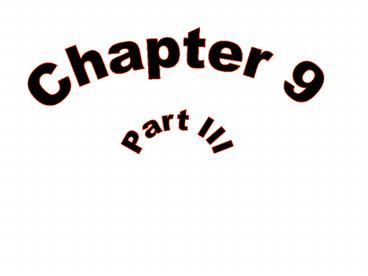Muscle Tone - PowerPoint PPT Presentation
Title: Muscle Tone
1
Chapter 9
Part III
2
Muscle Tone
- Is the constant, slightly contracted state of all
muscles, which does not produce active movements. - Keeps the muscles firm, healthy, and ready to
respond to stimulus - Spinal reflexes account for muscle tone
3
Energy for Contraction
- ATP
- Anaerobic glycolysis
- When muscle contractile activity reaches 70 of
maximum - Bulging muscles compress blood vessels
- Oxygen delivery is impaired
- Pyruvic acid is converted into lactic acid
4
Energy for Contraction
- Anaerobic glycolysis
- Lactic Acid
- Diffuses into the bloodstream
- Used as fuel by liver, kidneys, and heart
- Converted into pyruvic acid by the liver.
5
(No Transcript)
6
Muscle Fatigue
- Muscle fatigue occurs when
- ATP production fails to keep pace with ATP use
- There is a relative deficit of ATP, causing
contractures - Lactic acid accumulates in the muscle
- Ionic imbalances are present
7
Muscle Fatigue
- Intense exercise produces rapid muscle fatigue
(with rapid recovery) - Na-K pumps cannot restore ionic balances
quickly enough - Low-intensity exercise produces slow-developing
fatigue - SR is damaged and Ca2 regulation is disrupted
8
Oxygen Debt
- 1. Vigorous exercise causes dramatic changes in
muscle chemistry - 2. For a muscle to return to a resting state
- Oxygen reserves must be replenished
- Lactic acid must be converted to pyruvic acid
- Glycogen stores must be replaced
- ATP and CP reserves must be resynthesized
- 3. Oxygen debt the extra amount of O2 needed
for the above restorative processes
9
Force of Contraction
- The force of contraction is affected by
- The number of muscle fibers contracting the
more motor fibers in a muscle, the stronger the
contraction - The relative size of the muscle the bulkier the
muscle, the greater its strength - Degree of muscle stretch muscles contract
strongest when muscle fibers are 80-120 of their
normal resting length
10
Muscle Fiber Types
- 1. Speed of contraction determined by speed in
which ATPases split ATP - 2. ATP-forming pathways
- Oxidative fibers use aerobic pathways
- Glycolytic fibers use anaerobic glycolysis
- 3. These two criteria define three categories
slow oxidative fibers, fast oxidative fibers, and
fast glycolytic fibers
11
Muscle Fiber Types
- 1. Slow oxidative fibers contract slowly, have
slow acting myosin ATPases, and are fatigue
resistant - 2. Fast oxidative fibers contract quickly, have
fast myosin ATPases, and have moderate resistance
to fatigue - 3. Fast glycolytic fibers contract quickly, have
fast myosin ATPases, and are easily fatigued































